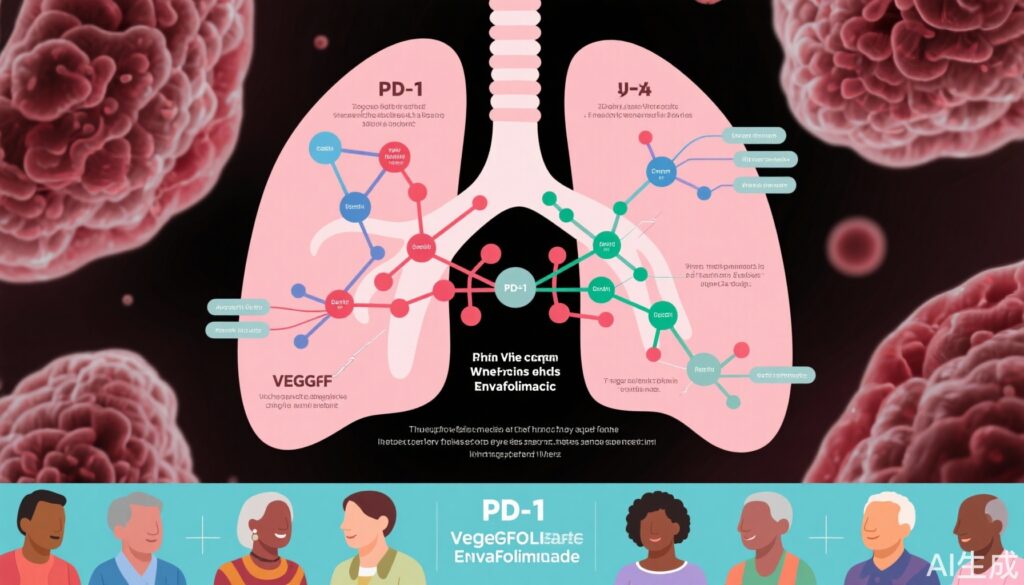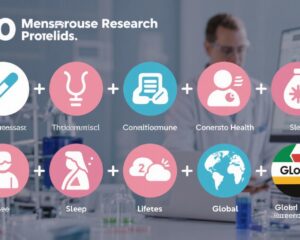Introduction
The Phase III global HARMONi clinical trial evaluates ivonescimab, a novel PD-1/VEGF bispecific antibody, in the treatment of non-small cell lung cancer (NSCLC) patients. Presented at the World Lung Cancer Conference (WCLC) 2025, the updated data provide further evidence of ivonescimab’s clinical benefits, including improved overall survival (OS) and progression-free survival (PFS), with the added advantage of consistent efficacy across different ethnic and geographic populations. This article critically examines the updated results, their clinical implications, and the broader potential of ivonescimab in oncology.
Study Background and Disease Burden
Lung cancer remains the leading cause of cancer-related mortality worldwide, with NSCLC accounting for approximately 85% of cases. Despite advances in immunotherapy targeting the PD-1/PD-L1 axis, many patients experience disease progression or resistance. Moreover, variability in therapeutic responses among patients from different geographical regions, such as Asia and Western countries, poses challenges for global treatment strategies. The HARMONi study addresses this unmet need by evaluating ivonescimab, designed to simultaneously target PD-1 and VEGF pathways, potentially overcoming resistance mechanisms and improving survival outcomes.
Study Design
The HARMONi trial is a randomized, multicenter, international Phase III study enrolling advanced NSCLC patients. Approximately 38% of participants were from North America and Europe to meet FDA regulatory requirements, ensuring representation of diverse populations. The study compares ivonescimab, a PD-1/VEGF bispecific antibody, against standard-of-care treatments. Primary endpoints include OS and PFS, analyzed in the intent-to-treat (ITT) population and stratified by region and ethnicity. Secondary endpoints include objective response rate (ORR), duration of response (DoR), and safety profiles.
Parallel to the global HARMONi trial, HARMONi-A, a Phase III study conducted in China, assesses ivonescimab’s efficacy in a predominantly Asian patient cohort, with OS as a key endpoint.
Key Findings
Overall Survival (OS) Benefit
The updated HARMONi data released in September 2025, with a median follow-up of 13.7 months, show a statistically significant improvement in OS for ivonescimab-treated patients compared to control, with a hazard ratio (HR) of 0.78 (95% CI: 0.62–0.98; P=0.0332). This represents an improvement from the May 2025 interim analysis where OS benefit was a strong trend but did not reach significance (HR=0.79, P=0.057).
Notably, OS gains were more pronounced in the North American subgroup, where the HR reached 0.70. Median OS was not yet reached in the ivonescimab arm versus 14.0 months in control, indicating substantial extension of survival in this region.
Progression-Free Survival (PFS)
The May 2025 primary PFS analysis demonstrated that ivonescimab significantly reduced disease progression or death risk by 48% compared with control (HR=0.52; P<0.00001), achieving both clinical and statistical significance. This robust PFS benefit underscores envafolimab’s ability to effectively control tumor growth.
Response Rates and Duration
Ivonescimab treatment was associated with a higher overall response rate (ORR) of 45% compared to 34% in the control group. Furthermore, the median duration of response was prolonged (7.6 months versus 4.2 months), suggesting sustained tumor control in responders.
Safety Profile
Ivonescimab demonstrated a favorable safety and tolerability profile consistent with previous findings. No new safety signals were detected, and adverse events were manageable. Safety outcomes were concordant between the global HARMONi and region-specific HARMONi-A trials, further validating the drug’s risk-benefit balance.
Consistency Across Populations
One of the HARMONi trial’s highlights is the consistency of clinical benefits across Western and Asian patients. OS and PFS benefits in global participants align closely with results from the China-based HARMONi-A study, reinforcing ivonescimab’s broad therapeutic applicability regardless of ethnicity or geographic origin.
Comparisons with Other PD-1/PD-L1 Therapies
Further supporting ivonescimab’s potential, the HARMONi-2 and HARMONi-6 trials also show positive outcomes. HARMONi-2 demonstrated superiority of ivonescimab monotherapy over pembrolizumab in first-line treatment for PD-L1-positive NSCLC, leading to regulatory approval. The HARMONi-6 trial showed significant benefits of envafolimab plus chemotherapy versus alternative PD-1 inhibitor combinations in squamous NSCLC.
These data affirm ivonescimab’s robust anti-tumor activity and its ability to potentially redefine standards for immunotherapy and antiangiogenesis combinations.
Mechanistic Insights
Ivonescimab’s dual targeting of PD-1 and VEGF pathways represents an innovative approach. PD-1 inhibition restores anti-tumor immunity by activating exhausted T cells, while VEGF blockade disrupts tumor angiogenesis and immunosuppressive microenvironments. The synergistic mechanism likely contributes to improved efficacy and durable responses by overcoming resistance seen with monotherapies.
Clinical Impact and Future Directions
The updated HARMONi data underscore ivonescimab’s promise as an effective, globally applicable treatment for NSCLC. Demonstrated benefits in OS and PFS, high response rates, and favorable safety support its integration into clinical practice.
Ongoing and planned studies are exploring ivonescimab in multiple tumor types beyond NSCLC, including biliary tract cancer, head and neck squamous cell carcinoma, triple-negative breast cancer, colorectal cancer, and pancreatic cancer. Early-phase studies are also investigating combinations with other immunotherapeutic agents to further enhance efficacy.
Ivonescimab’s comprehensive clinical development, covering diverse populations and tumor types, highlights its potential to broaden immunotherapy horizons and improve patient outcomes worldwide.
Conclusion
The updated Phase III HARMONi trial results demonstrate that ivonescimab offers a significant and clinically meaningful survival advantage in NSCLC patients, with consistent efficacy and safety across global populations. These findings, corroborated by the China-specific HARMONi-A study, emphasize ivonescimab’s role as a breakthrough immunotherapy combining PD-1 and VEGF inhibition. As ivonescimab progresses in cancer treatment landscapes, it promises to deliver substantial benefits and expand therapeutic options for patients across multiple tumor types and demographics.
References
1. Mok T, et al. Phase III HARMONi Trial Update on ivonescimab in NSCLC. WCLC 2025 Presidential Symposium, September 2025.
2. HARMONi-A Clinical Trial Data, submitted for publication.
3. Reck M, et al. Current and Emerging Immunotherapies for NSCLC. Nat Rev Clin Oncol. 2023;20(4):219-236.
4. Herbst RS, et al. PD-1/PD-L1 Blockade in Lung Cancer: Mechanisms and Clinical Implications. Cancer Discov. 2021;11(3):614-629.
5. Ferrara N, et al. VEGF and the Tumor Microenvironment. Trends Mol Med. 2020;26(4):313-324.



